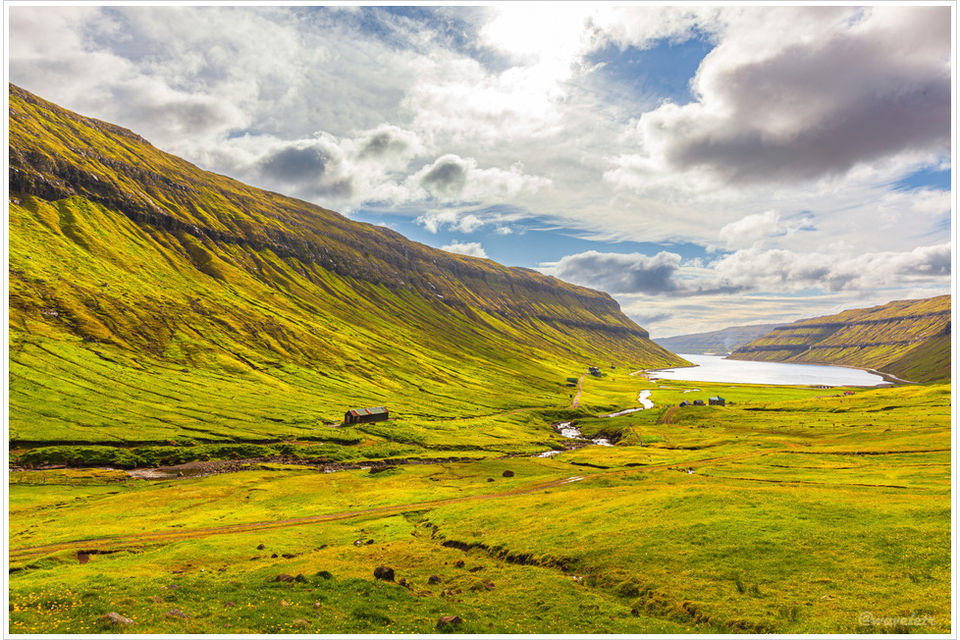2019.7.6Today, we were headed to another famous landmark of the Faroe Islands: Trælanípa. The weather here is always shifting between sun and clouds. In the morning sunlight, the bay was a soothing blend of vibrant greens and soft yellow tones, a true feast for the eyes.
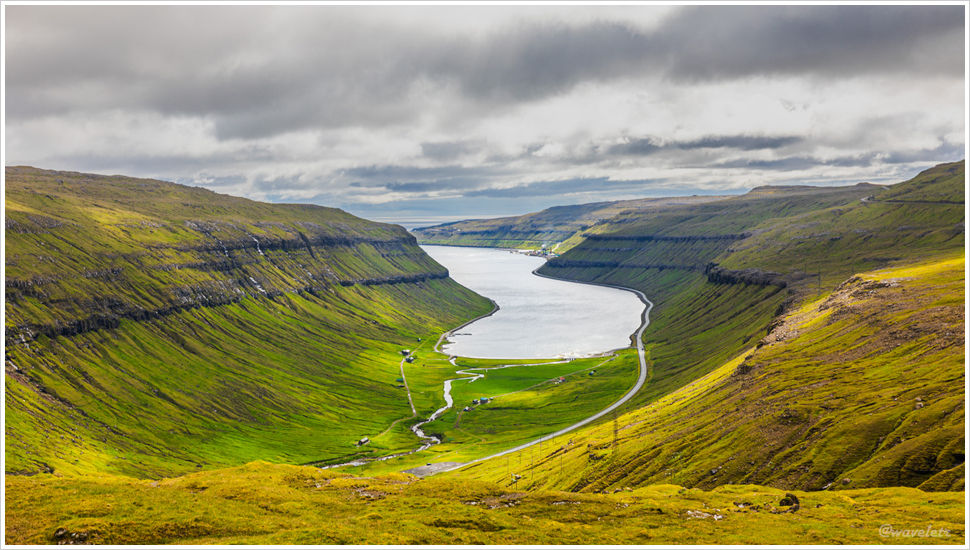
Trælanípa is located on the island of Vágar. To get there from Tórshavn, you have to pass through the Vágar Tunnel. When we visited the Faroe Islands in 2019, the 11-kilometer-long Eysturoy Tunnel had not yet opened. The longest subsea tunnel connecting the islands was the Norðoyatunnilin, which we had driven through a couple of days earlier. The Vágar Tunnel is the second longest, stretching nearly 5 kilometers. Compared to the narrow, single-lane mountain tunnels, these undersea tunnels feel like grand highway, with wide lanes and even colorful light displays on the ceilings.
We first stopped in the town of Sandavágur. The most striking building there is a red-roofed church built during World War I. Unfortunately, it was closed when we visited.
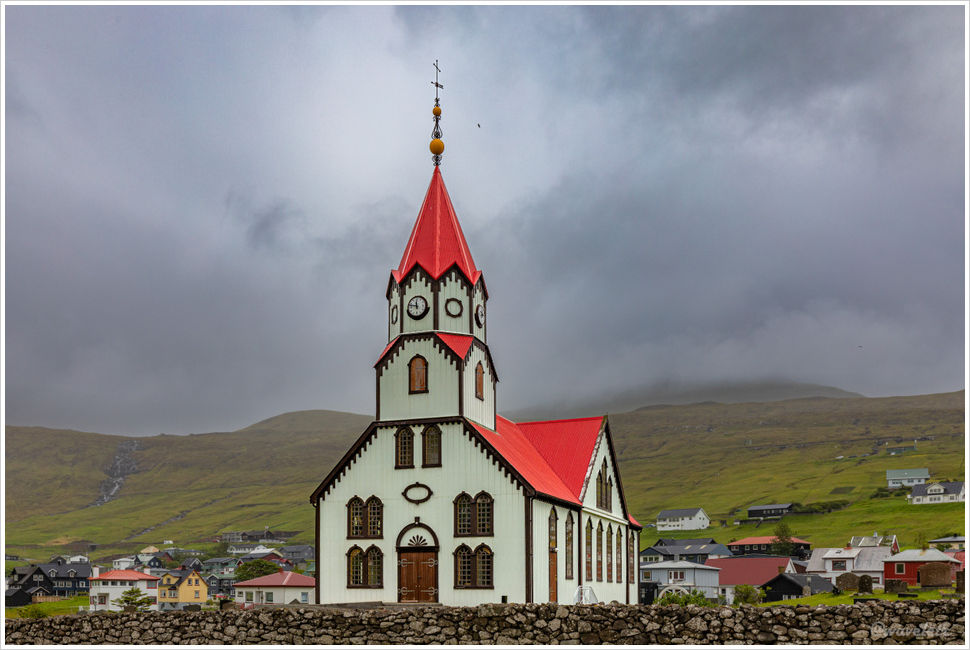
The walk to the end of Trælanípa is about 3 kilometers long, starting from one side of the town of Miðvágur. A small maintenance fee is required to access the trail. As this is a uniquely popular site, the growing number of visitors has prompted local residents to take measures to protect the surrounding environment. I later heard that they were discussing plans to periodically close the area to limit foot traffic – an effort to balance tourism with environmental preservation.
From the trailhead, you can see another striking landmark along Vágar’s coast: Trøllkonufingur, which translates to Troll’s Wife’s Finger. In Nordic folklore, a troll is a creature that dwells in remote places, far from human settlements. This sharp stone spire rises dramatically from the coastline and is hard to miss. As I stood there taking photos from a distance, a few goats wandered over, circling me curiously.
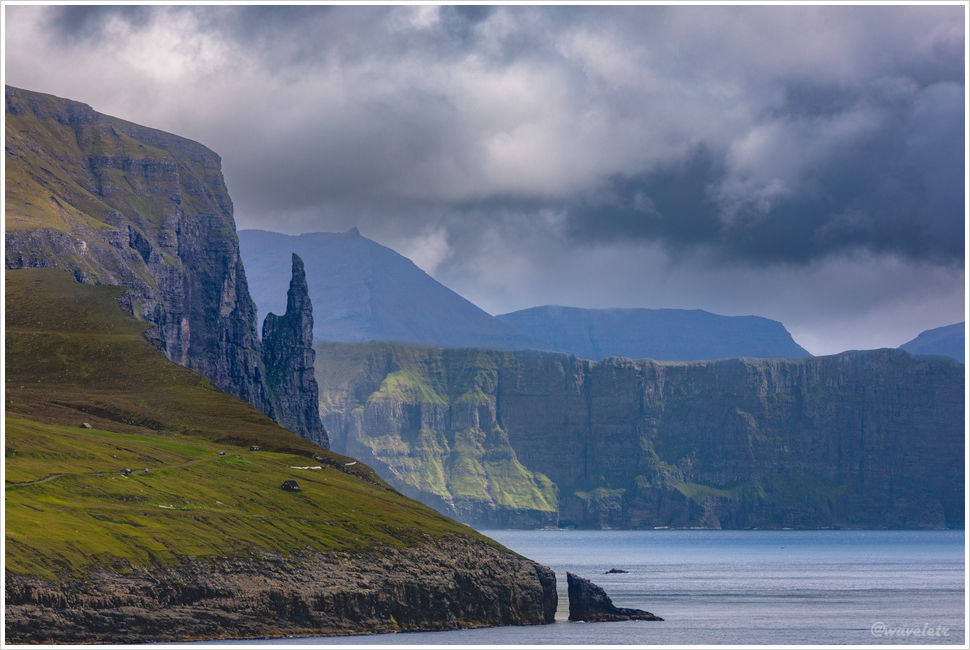
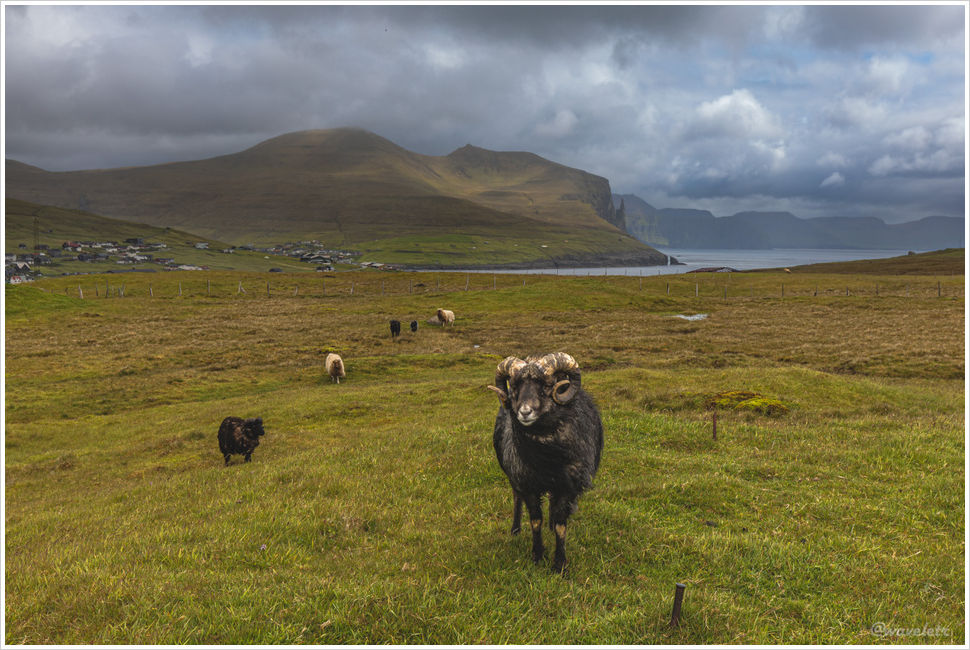
Walking along the hillside trail, I could already see the jagged cliffs near Trælanípa in the distance, with tiny silhouettes of visitors scattered across the top. The weather was overcast, and the sparse human presence added to the feeling of being at the edge of the world, remote, quiet, and hauntingly vast.
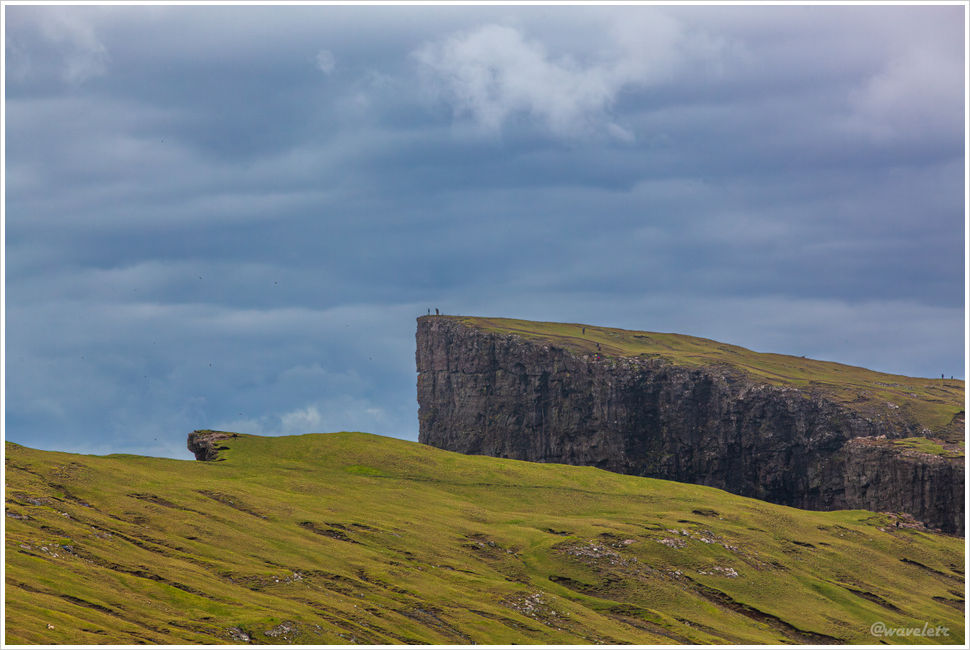
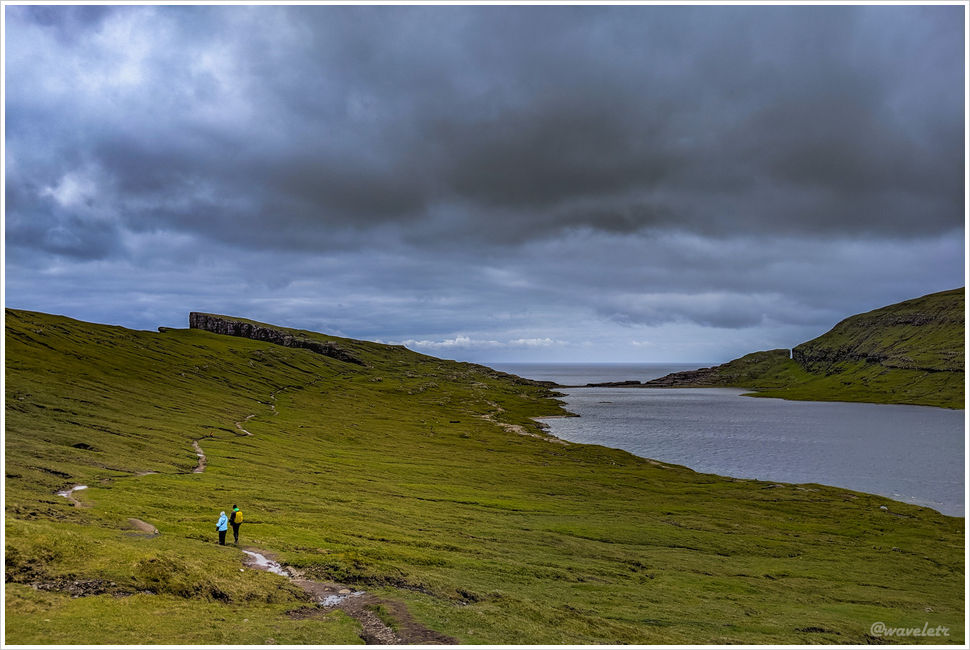
Getting closer to Trælanípa, I could finally see the full form of the cliff – sloping outward into the sea, then dropping straight down into the water. Turning back, the same cliff framed a narrow bay between its steep edges. In the distance, I could see Koltur and Hestur, two of the smaller outlying islands of the Faroes. And yet, this breathtaking scenery wasn’t even the main highlight of Trælanípa.
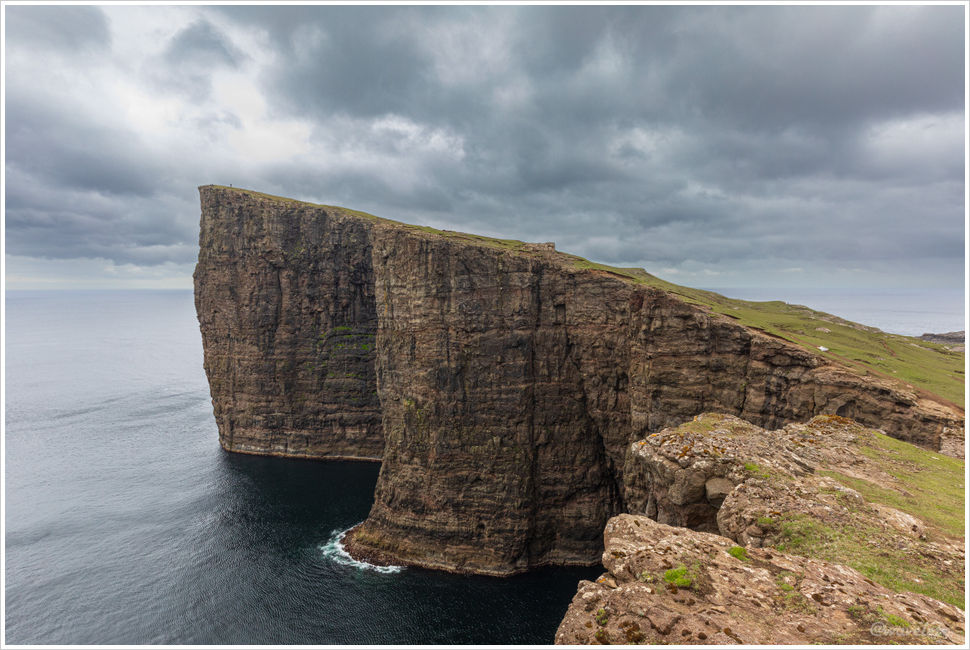
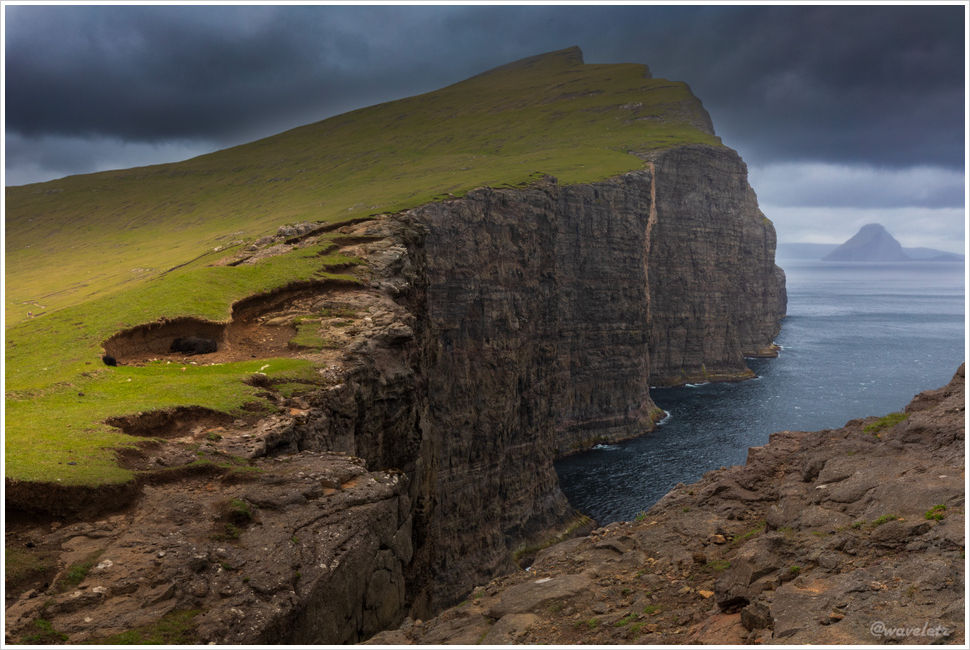
Climbing up the cliffs of Trælanípa, the southern half of Lake Sørvágsvatn came fully into view. The lake curves in an S-shape, but from this vantage point, only the southern portion is visible. Due to the upward-sloping terrain on the right and the sheer cliffs in the foreground, it creates the striking illusion that the lake is floating high above the ocean. In reality, the elevation difference between the lake and the sea isn’t nearly as dramatic as it appears. It’s the perspective that makes the scene so surreal.
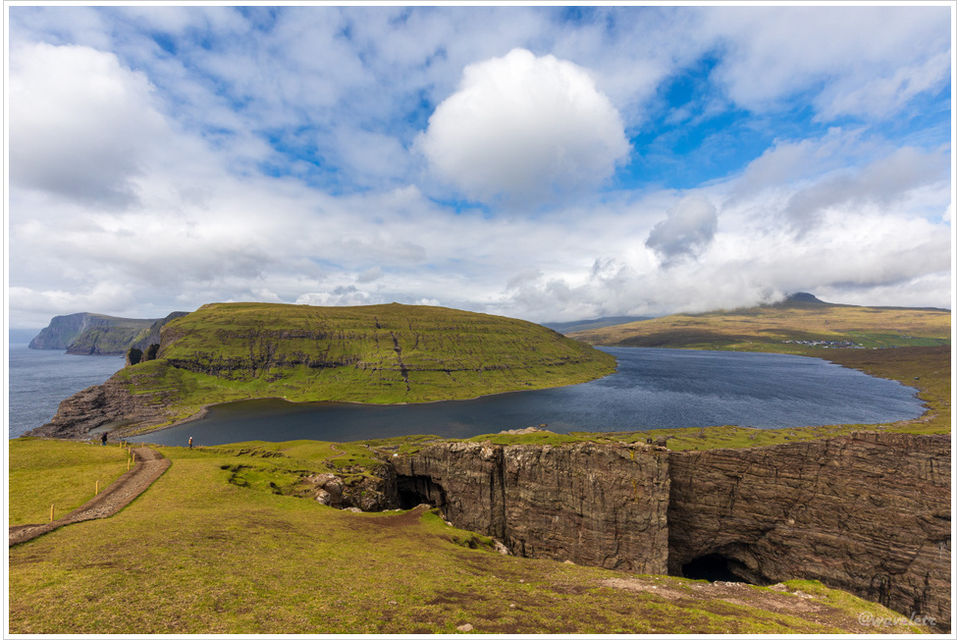
This is a panoramic stitched photo taken from a very precarious spot, right at the edge of a cliff over a hundred meters high. Back then, I didn’t have a drone, so I had to lie flat on the ground and stretch my arm out just to capture the entire cliff face across from me. Trælanípa means “Slave Mountain,” and according to legend, this is where the Vikings would push old or infirm slaves off the cliff.
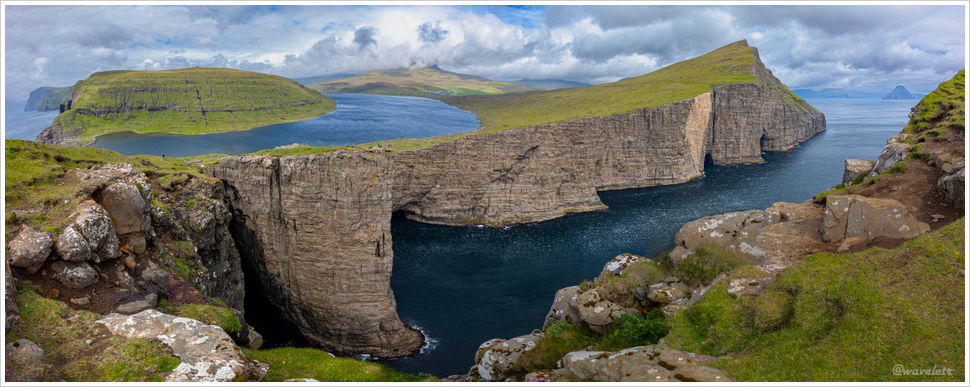
It was overcast when I first arrived, but by the time I reached the top of Trælanípa, the sky began to clear, revealing blue skies and drifting white clouds. From the western edge of the cliff, I could see the Bøsdalafossur waterfall, where Lake Sørvágsvatn flows into the sea. From this angle, it becomes clear that the lake is actually only about 30 meters above sea level. In the distance, another dramatic sea stack comes into view, Geituskoradrangur, which translates to “Goat’s Ear”. Cliffs and sea stacks like this are a common and striking feature of the Faroe Islands’ rugged coastline.
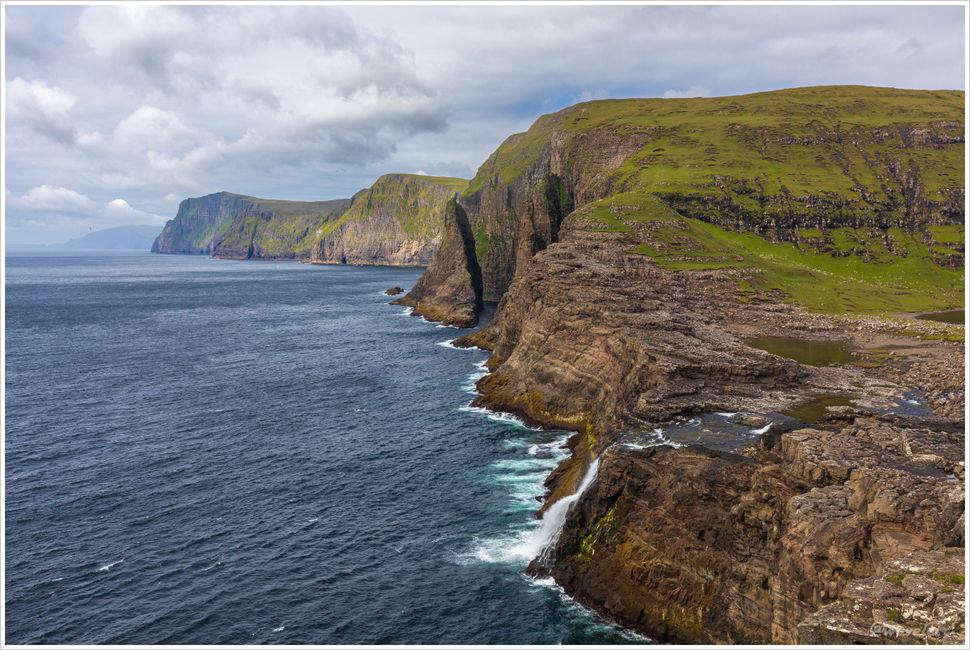
On the way back, light rain began to fall once again. The mountains of the Faroe Islands aren’t particularly high, but situated in the middle of the North Atlantic, the weather is unpredictable. Along the trail, I spotted a few scattered goats, draped in long shaggy coats, standing alone in the landscape.
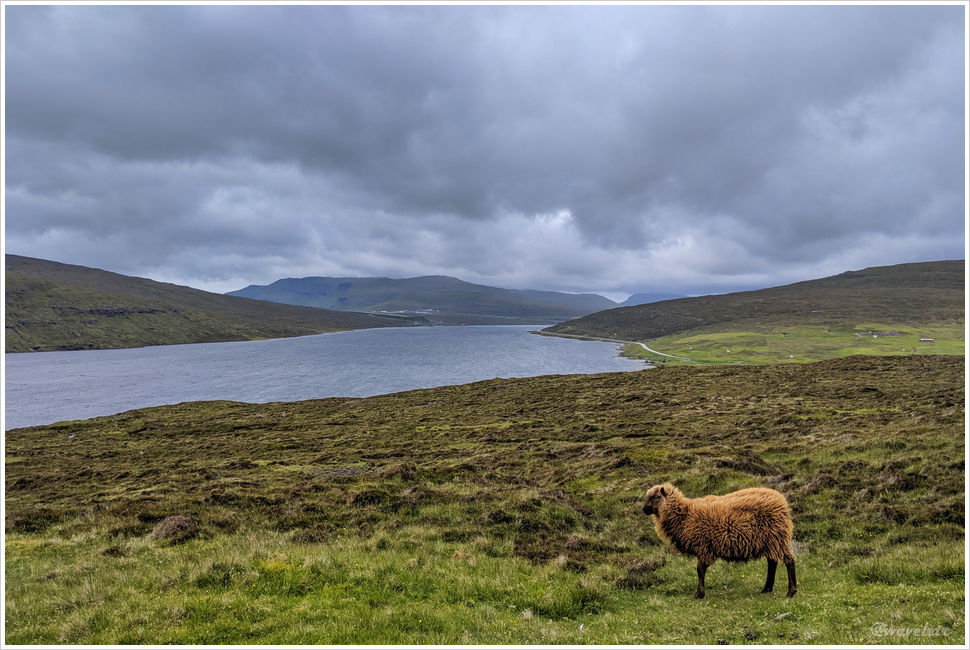
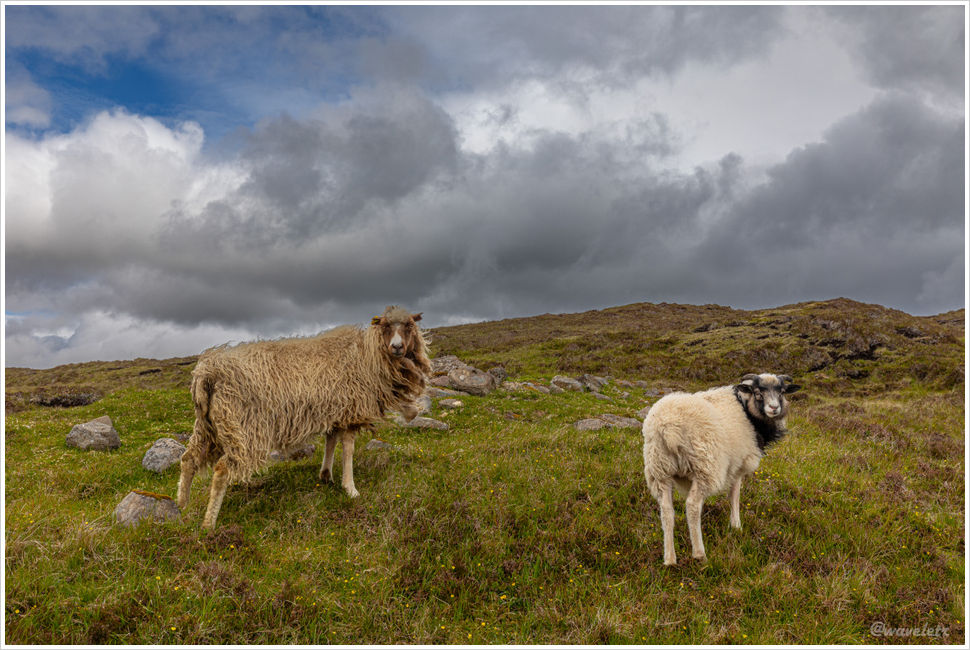
My wife had been waiting for me at a restaurant in Sandavágur for two or three hours by the time I made it back. While Nordic restaurants are generally known for their creativity, this one, called Fiskastykkið, was particularly imaginative. The chandelier on the staircase was made from dried salmon skin. In earlier times, indigenous peoples across the Nordic regions would hang and air-dry salmon for preservation, and the design of the chandelier was inspired by that traditional practice. Another example was the creamy soup we ordered: the herbs on top were arranged to resemble underwater seaweed, both visually beautiful and delicious.

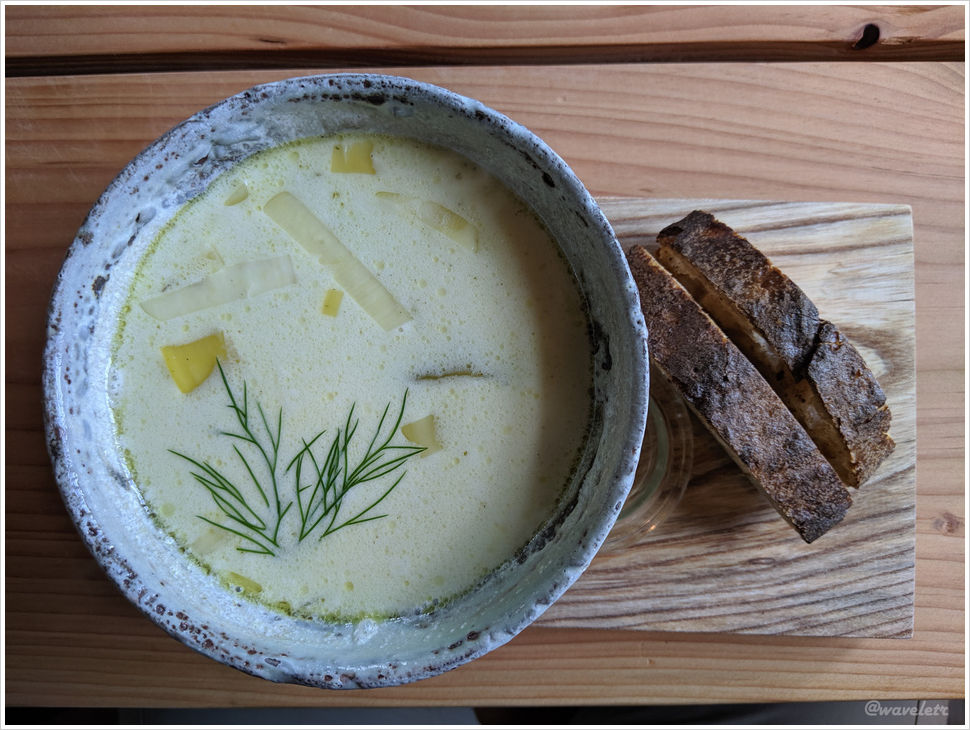
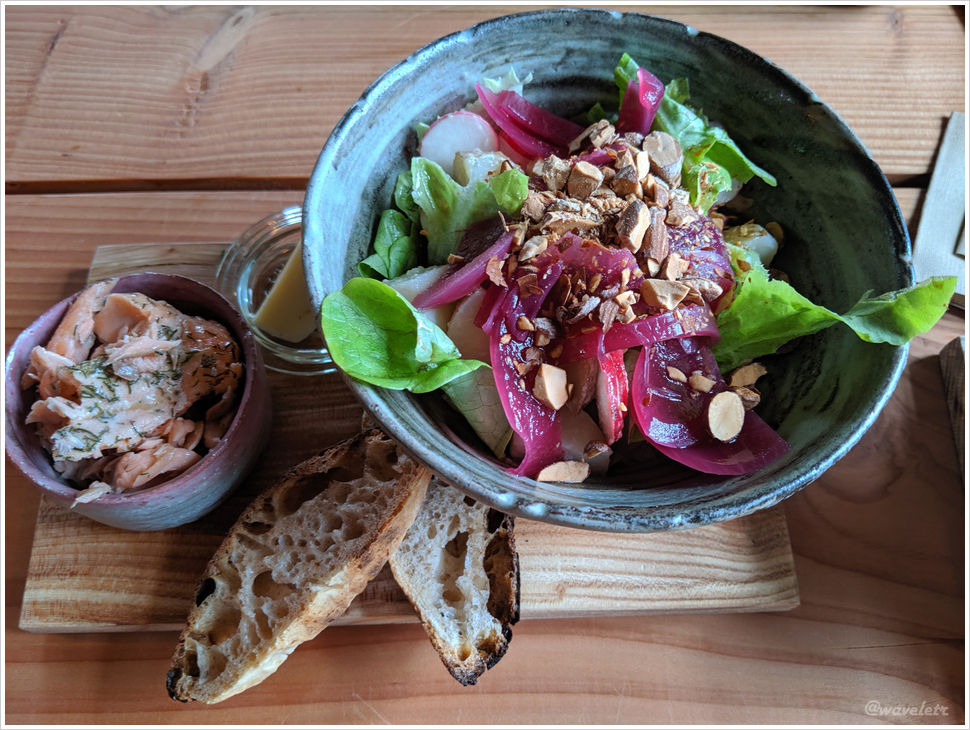
With plenty of time left in the afternoon, we decided to take a detour to Saksun on our way back to Tórshavn. Located on the northwestern tip of Streymoy Island and surrounded by steep mountains, Saksun is a remote and peaceful village. The small bay was once a natural deep-water harbor, but a powerful storm deposited sand and silt at its mouth, turning it into a lagoon. Now, boats can only reach the sea during high tide. At low tide, the sandy seabed is exposed, allowing visitors to walk all the way out to the mouth of the bay.
The white church in Saksun is the village’s most iconic landmark. It’s said to still be in use today, however, the traditional turf-roofed houses nearby didn’t show any obvious signs of habitation. Perched on land that juts out toward the open sea, the village feels truly remote. When we visited, wind and rain were sweeping through the valley, so we could only make a brief stop before moving on.
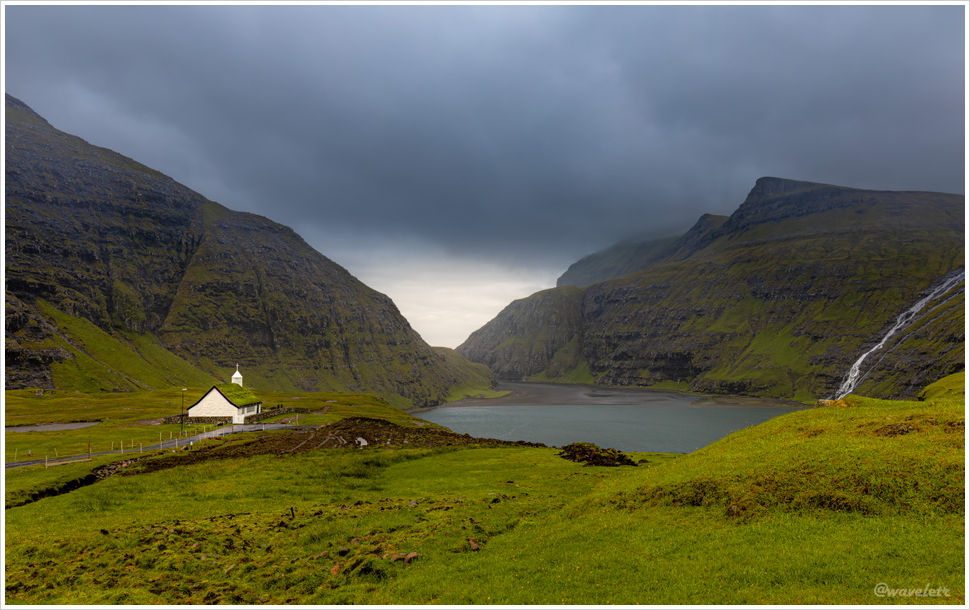
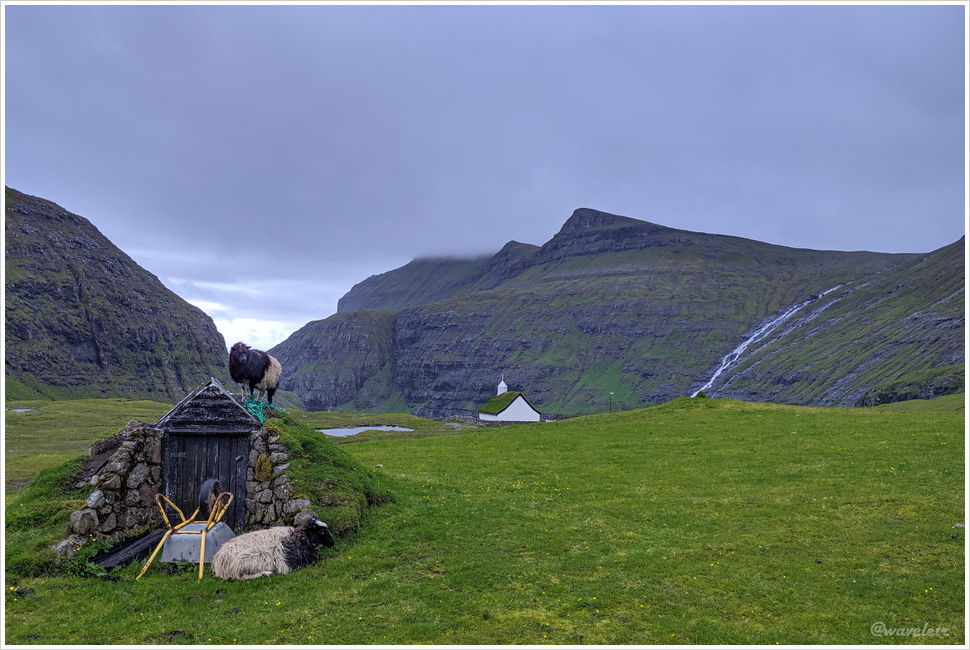
On the way back to the city, and just as expected, the sun came out again. The Faroe Islands, forever unpredictable, and always full of surprises!
